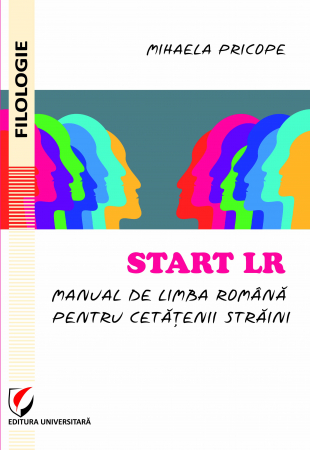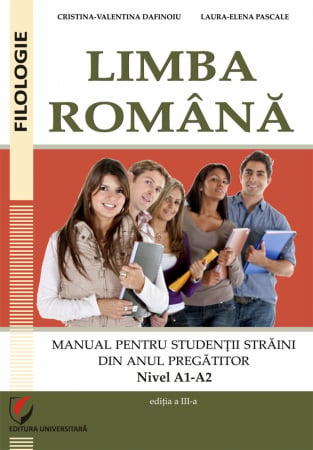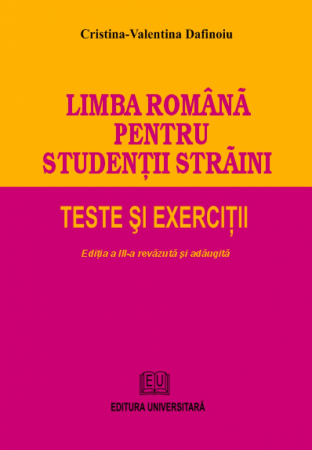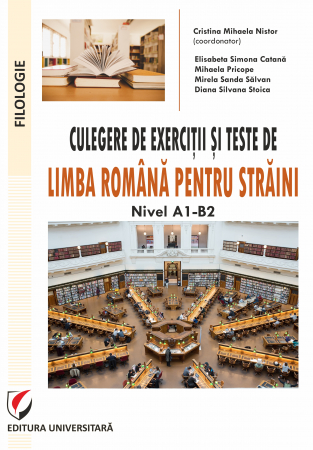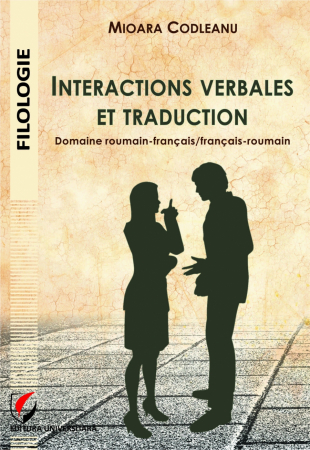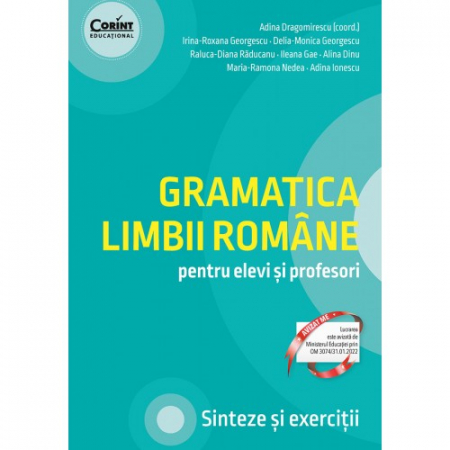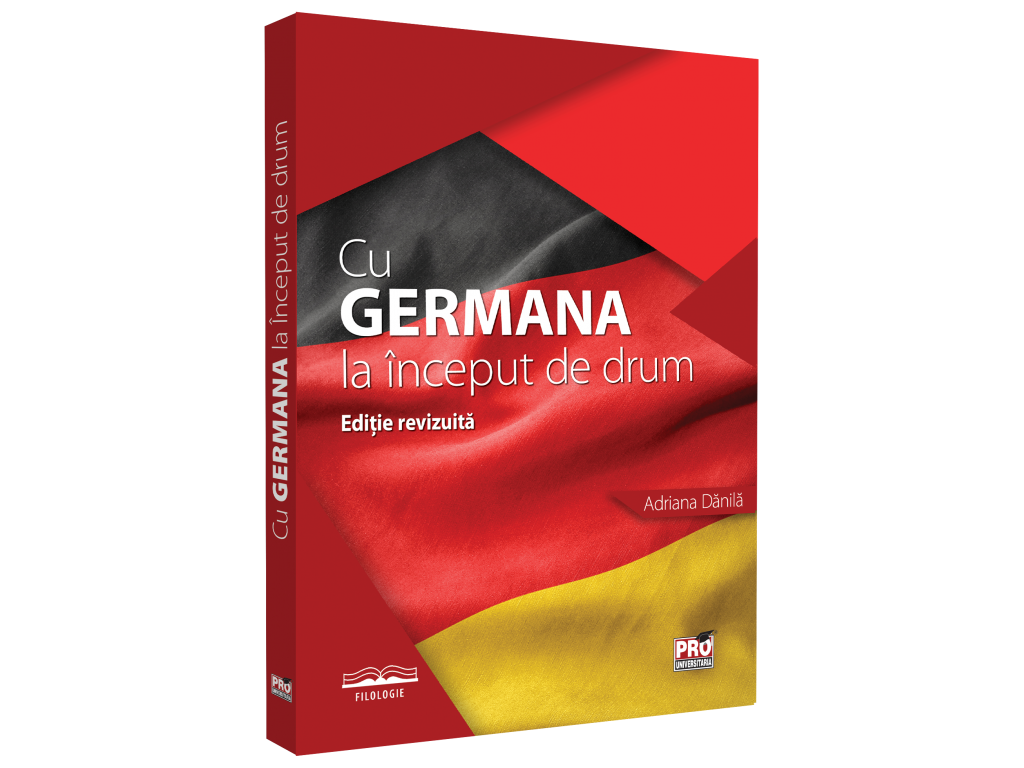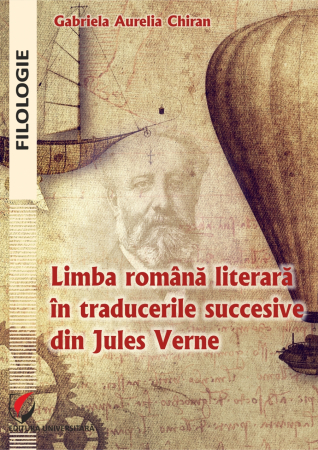6359.png) Les parcours langagiers des étudiants étrangers en mobilité de diploma en tant qu’outil d’intégration dans l’université rumaine. Case study - l'Université «Ovidius» of Constanta - Anamaria Ionita
Les parcours langagiers des étudiants étrangers en mobilité de diploma en tant qu’outil d’intégration dans l’université rumaine. Case study - l'Université «Ovidius» of Constanta - Anamaria Ionita
6359.png)
Publisher: Editura Universitară
Author: Anamaria Ionita
Edition: I
Pages: 232
Publisher year: 2022
ISBN: 978-606-28-1549-3
DOI: https://doi.org/10.5682/9786062815493
- Description
- Download (1)
- Authors
- Content
- More details
- Reviews (0)
In the first part of the work, the author undertakes an extremely in-depth and well-organized documentary approach regarding the existing internationalization devices in Romania and, especially, at the Ovidius University in Constanta. Thus, in chapter I, we find out the evolution of the presence of foreign students on Romanian territory in the last century, where they come from and what types of academic courses are prioritized. We understand what are the internationalization strategies implemented in Romania, from the adoption of the transferable credit system to the creation of bodies specialized in the management of the flow of foreign students or the organization of inter-university co-degree partnerships. The author also reflexively goes through the texts of the national legislation to identify the provisions related to the admission of foreign students to studies, to the equivalence of diplomas or to their insertion on the Romanian labor market. It provides information on the mechanisms of international promotion of Romanian university education by exploring websites intended for this purpose, the programs of international conferences or fairs. This multiparametric circumscription of the presence of foreign students in Romania, which the author places at the macrosociological level, is extremely important in itself because, according to our knowledge, it is the first approach of this kind undertaken in Romanian academic research. On the other hand, the author's documentary effort is constantly doubled by a conceptualization effort. Thus, the fundamental notions with which she operates in this first chapter of the book (intégration / insertion, étudiant étranger, internationalisation, etc.) are subject to a nuanced analytical look, by appealing to fundamental works in the field in relation to which the author positions herself accurately and clarity.
In the second chapter of the book, the author describes the internationalization strategies proposed by the management of the Ovidius University in Constanta, the strategic actions, as well as the actors involved in their implementation. The working methods of the preparatory year device and the Romanian language learning strategies proposed by the UOC in order to attract potential candidates and support foreign students are presented, in an extremely useful way. As in the previous chapter, the corroboration of different types of data for the most nuanced description of the analysis framework is very useful and certainly innovative in the Romanian research space.
The third chapter of the book represents a transitional chapter between the first and second parts. Far from being just a description of the corpus and the methods of analysis, the course proposed by the author proves the solidity of the sociolinguistic approach she adopts: after a theoretical reflection on the key concepts: the interview (Blanchet, 1991; Kaufmann, 1996; Bres, 1999; Demazière, 2008; De Ketele and Roegiers, 2015) and the questionnaire (Ghiglione, 1987; Maurer, 1999; Boukous, 1999; Vilatte, 2007), the chapter describes the stages of carrying out the interview-based survey, the research corpus, the sample, the methods of identifying the foreign population of medical students, the subject selection criteria, as well as the difficulties encountered in data collection. The author's permanent reflexive counterpoints are like answers to hypothetical questions and allow us to understand the difficulty of the research course undertaken: circumscribing the public, identifying the subjects, getting in touch with them, the actual interview, resuming contact two years later for verification of initial hypotheses, etc. At the end of the chapter, the synthesis of the individual profiles of the students retained in the sample from the point of view of the linguistic repertoires, also represents an original point of view in the characterization of the public of foreign students on diploma mobility.
The fourth chapter of the book, under the broad label of analyzing the motivations evoked by foreign medical students regarding choosing Romania in general and UOC in particular to pursue medical studies, actually deals with the influence of representations and stereotypes about Romania, Romanians and the Romanian language on the academic and social integration of foreign students in the host country. Starting from extracts from the interviews of foreign students enrolled at the UOC, a unique and extensive corpus (49 interviews carried out between 2016-2020), the author accurately examines the recurring thematic categories that appear in the discourse regarding the host country, to Romanians in the broad sense and to Romanian colleagues in the narrow sense, to the Romanian language as the language of socialization. If the elements regarding the representations related to Romania and Romanians are located in an area of the stereotype and the predictable positive, we find extremely interesting the analyzes regarding the representations of foreign students related to the integration in the Romanian academic environment, among colleagues and teachers , in the teaching/learning process. Intelligently put «in the mirror» by the authors with complementary extracts from interviews with Romanian students or with teaching staff from UOC, these representations seem to us to be a mine of extremely useful information for further improvements of the institutional system of receiving foreign students but, above all, of their academic and collegial integration in the Romanian university environment. As in the previous chapters, the analyzes are accompanied by conceptual clarifications and reflective elements. The author carries out a nuanced review of the bibliography related to representations and sterotypes, of the linguistic imaginary (Houdebine-Gravaud, 2002). Moreover, this concept allows an interesting exploration of Romanian students' discourses regarding the Romanian language and its insertion in individual linguistic repertoires. Anamaria Ionita notes that the evaluation of the Romanian language is done according to different criteria: epistemic, aesthetic, affective and identity (Dabène, 1997) and that mastering the Romanian language plays an important role in building representations and relationships between foreign students and their hosts. In this context, we find extremely interesting the analyzes of the difficulties in learning the Romanian language that foreign students talk about in the collected speeches, difficulties that could, in their turn, be the subject of a separate research and could give rise a method of teaching the Romanian language for foreigners organized in a progression of difficulties.
Finally, the fifth chapter aims to analyze the evolution of the representations of seven foreign students about the Romanian language and Romanian society in general two years after the first interview and to identify the factors that determine these changes. The chapter presents the new representations circulated by the subjects and offers a synthesis of the constant elements and those that have evolved. The final goal of this analysis is to place the representational dynamics in an evolutionary framework, determined equally by the initial stereotypical representations, as well as by individual linguistic pathways and institutional strategies, and the didactic values of such an analysis are multiple. Among them, the most important refers to the identification of the parameters that can be influenced over time and the way of professional positioning in relation to these parameters.
The bibliography is extremely vast and up-to-date, in a heterogeneous and complex field of research, located at the confluence of linguistics and sociolinguistics, fields in which the author applies herself with professionalism and originality.
The present book stands out for the accuracy of the analyzes carried out by the author on an extremely large and original corpus, as well as for the author's reflexive positioning that allows her to obtain nuanced conclusions, with fruitful prospects for continuation.
Monica Vlad
Univ. Prof. skilled dr. at Ovidius University in Constanta, Romania
-
The language paths of foreign students on diploma mobility as a tool for integration into the Romanian university. Case study - “Ovidius” University of Constanţa
Download
FOREWORD / 15
ACKNOWLEDGMENTS / 17
GENERAL INTRODUCTION / 19
CHAPTER 1. ROMANIA AND ITS POSITION IN RELATION TO WELCOMING FOREIGN STUDENTS / 33
1.1. The presence of foreign students on Romanian territory: historical overview and figures / 33
1.2. Internationalization and National Strategies for the Internationalization of Romanian Higher Education / 39
1.3. State of play of the measures intended for future foreign students in Romania / 45
CHAPTER 2. RECEPTION ARRANGEMENTS FOR FOREIGN STUDENTS AT THE “OVIDIUS” UNIVERSITY OF CONSTANTA / 51
2.1. The field of study: "Ovidius" University of Constanta / 51
2.2. The internationalization process of the “Ovidius” University of Constanta / 52
2.3. Legislative and regulatory frameworks concerning the registration and admission of foreign students to the “Ovidius” University of Constanta / 55
2.4. Statistical description of foreign students attending the “Ovidius” University of Constanta / 57
2.5. Hosting arrangements for foreign students on diploma mobility at the “Ovidius” University of Constanta / 66
2.6. Balance sheet / 72
CHAPTER 3. SURVEY METHODOLOGY AND THE CORPUS / 73
3.1. Mixed methods of data production / 73
3.2. Choosing the type of survey / 74
3.3. The interview survey / 74
3.3.1. The interview situation and the interview process / 81
3.3.2. The interview chart / 82
3.3.3. The duration of interviews / 85
3.3.4. Transcript of interviews / 85
3.4. The corpus / 86
3.4.1. Presentation of the corpus / 86
3.4.2. Identification of subjects / 87
3.4.3. Subject selection criteria / 88
3.4.4. Sampling / 89
3.5. The main difficulties encountered during the collection of oral data / 99
3.6. Analysis methods: content analysis / 100
3.7. Balance sheet / 104
CHAPTER 4. REPRESENTATIONS AND STEREOTYPES OF FOREIGN MEDICAL STUDENTS AT “OVIDIUS” UNIVERSITY OF CONSTANTA / 106
4.1. The motivations of foreign students of the “Ovidius” University of Constanta regarding the choice of Romania / 112
4.1.1. The thematic category "Romanian origin / root" / 114
4.1.2. The thematic category "references / recommendations" / 115
4.1.3. The thematic category "benefits / advantages" / 117
4.1.4. Balance sheet / 120
4.2. The representations of foreign students from the “Ovidius” University of Constanta towards Romania as a host country and Romanians as hosts / 120
4.2.1. Representations of foreign students of the UOC of Romania / 120
4.2.2. Representations of foreign students of the Romanian UOC / 125
4.3. Representations of foreign students from the "Ovidius" University of Constanta towards other parameters of social and academic integration / 126
4.3.1. The representations of UOC foreign students about the actors of the host higher education institution / 127
4.3.1.1. The representations of UOC foreign students towards Romanian peers and the support received from them / 127
4.3.1.2. Representations of UOC foreign students towards Romanian teachers / 138
4.3.2. Representations of UOC foreign students about university studies and courses taken during their diploma mobility / 141
4.3.3. Representations of UOC foreign students about social relations and socialization practices with host students / 148
4.3.4. Representations of UOC foreign students towards integration into the host sociolinguistic environment / 153
4.4. The sociolinguistic representations of foreign students from the "Ovidius" University of Constanta towards the Romanian language and its learning: a reflection on identity renegotiation in a migratory context / 157
4.4.1. Representations of UOC foreign students towards the Romanian language according to different criteria (L. Dabène, 1997) / 157
4.4.1.1. The evaluation of the Romanian language according to the epistemic criterion / 157
4.4.1.2. The evaluation of the Romanian language according to the aesthetic criterion / 159
4.4.1.3. The evaluation of the Romanian language according to its status / 160
4.4.1.4. The evaluation of the Romanian language according to the social criterion / 161
4.4.1.5. Romanian as an affective and identity component / 164
4.4.1.6. Romanian as a means of communication / 165
4.4.1.7. Romanian: "It's my future" / 166
4.4.2. The representations of the foreign students of the UOC towards the learning of the general and medical Romanian language / 168
4.4.2.1. Learning General Romanian / 168
4.4.2.2. Learning medical Romanian / 172
4.5. Balance sheet / 174
CHAPTER 5. LONGITUDINAL MONITORING OF THE DYNAMICS OF INTEGRATION: STUDY OF THE EVOLUTION OF REPRESENTATIONS TOWARDS THE ROMANIAN LANGUAGE AND SOCIETY / 177
5.1. The thematic category "representations of Romania and Romanians" after two years / 182
5.2. The thematic category "representations of the Romanian language and its learning" after two years / 193
5.2.1. The epistemic dimension of the Romanian language / 193
5.2.2. The aesthetic and affective dimensions of the Romanian language / 197
5.2.3. The identity dimension of the Romanian language / 197
5.2.4. The place attributed to the Romanian language by foreign students / 199
5.3. Balance sheet / 201
GENERAL CONCLUSION / 203
BIBLIOGRAPHY / 212
LIST OF ACRONYMS AND ABBREVIATIONS / 229
LIST OF FIGURES / 231
LIST OF TABLES / 232

![Les parcours langagiers des étudiants étrangers en mobilité de diploma en tant qu’outil d’intégration dans l’université rumaine. Case study - l'Université «Ovidius» of Constanta - Anamaria Ionita [1] Les parcours langagiers des étudiants étrangers en mobilité de diploma en tant qu’outil d’intégration dans l’université rumaine. Case study - l'Université «Ovidius» of Constanta - Anamaria Ionita [1]](https://gomagcdn.ro/domains/editurauniversitara.ro/files/product/large/les-parcours-langagiers-des-etudiants-etrangers-en-mobilite-de-diplome-en-tant-qu-outil-d-integration-dans-l-universite-roumaine-etude-de-cas-l-102705.jpg)
